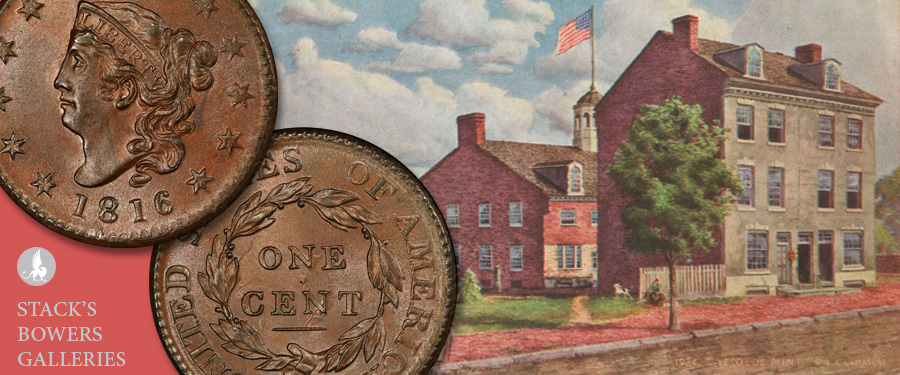
On January 11, 1816, U.S. Mint Director Robert Patterson wrote a letter to President James Monroe deliver some unfortunate news*:
“Mint of the United States, January 11th, 1816
“Sir, I have the mortification of informing you that this morning, about 2:00, a fire broke out in the mill house, a wooden building belonging to the Mint, which is consumed altogether with an adjoining building containing the rolling and drawing machines, and also the melting house. The front part of the building, containing the coining presses, the office and the Assayer’s Department is uninjured. The manner in which the fire originated is perfectly unaccountable. No fire is even kept in the part of the building where it was first discovered; nor had any of the workmen been there for some days. No loss of gold or silver will be sustained of any consequence, nor will the copper coinage be the least impeded.”
In a letter a few days later, Patterson updated the President with the cause of the fire:
“on examining a barrel in a neighboring yard partly filled with wood ashes, taken from the hearths of an adjoining dwelling-house, and which had been set in actual contact with the weathered boarding of our mill house, a wooden building, where the fire was first discovered, no doubt remains that here the fire originated.”
The destruction of the smelting and milling structures stopped silver and gold coinage for nearly a year, though in a March 1816 letter to President Madison, Patterson downplayed the significance of the loss: “In truth, except the mere building, which was ill-constructed, & of little value, no great loss has been sustained by the fire. The principal parts of the machinery were, in fact, nearly worne out; & must have been replaced in a short time, tho’ no such accident had occurred.”
The fire ultimately put the Mint out of commission for much of 1816, though as Patterson noted in the first letter, copper coin production was not significantly affected, and 1816-dated large cents were struck in quantities comparable to other years in the 1810s. Half cents dated 1811 were the last of their denomination from the Mint in the 1810s and they would not appear again until the mid-1820s.
Several denominations had been out of production in years prior to 1816 owing, among other factors, to the disruption of the War of 1812; the Mint fire compounded this difficulty. Replacement equipment was eventually purchased from the British, new facilities were erected, and coin production expanded greatly in subsequent years.
Fires occurred occasionally at U.S. Mint facilities; in these earlier eras, blazes regularly consumed large parts of cities and towns. Other major fires damaged or destroyed Mint property in 1832 and 1868. The Treasury Building burned down in 1801 and in 1833, the second the result of arsonists’ machinations.
*The quoted correspondence in this article was taken from The Secret History of the First U.S. Mint by Leonard Augsburger and Joel Orosz, highly recommended reading for those interested in early U.S. Mint history.





